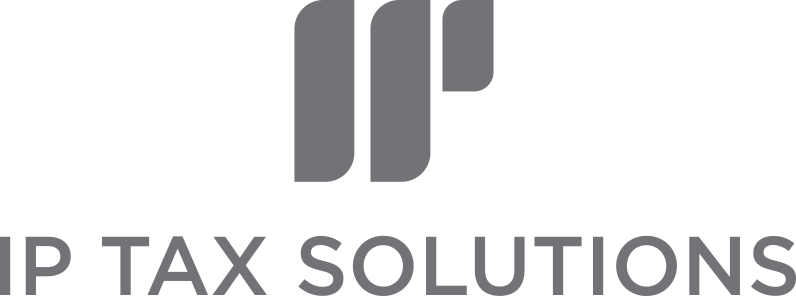
The Seed Enterprise Investment Scheme (shortened to 'SEIS') has been around since 2012 and it aims to help early-stage companies secure equity funding for the growth of their business.
SEIS seeks to achieve this aim by providing attractive tax breaks to UK tax-payers in return for cash investments into shares issued by, primarily, UK unlisted limited companies.
What are the tax benefits of SEIS?
The tax benefits are targeted at the individuals who invest into the qualifying small, early-stage unquoted companies across a series of UK taxes as follows:
Income tax relief
UK income tax relief is provided at a rate of 50% of the amount invested (regardless of the rate at which the individual tax-payer is currently paying income tax e.g. a basic rate tax-payer paying tax at 20% still gets the full 50% SEIS income tax benefit).
All UK tax-payers have a £100,000 annual SEIS investment limit under current rules (set to increase to £200,000 from April 2023) so the maximum potential SEIS income tax saving in a tax year is currently £50,000 i.e. the full current limit of £100,000 invested at the 50% SEIS income tax saving rate.
The relevant investor would need to have the income tax suffered in the current or prior tax year to be able to claim the full income tax relief i.e. an investor would need to have suffered income tax of £50,000 in the current and/or prior tax year to be able to claim the full current benefit.
More typically an investor would calculate their income tax suffered to determine the optimum SEIS investment amount - for example, an individual who has suffered income tax of £20,000 might decide to invest £40,000 into one or more SEIS qualifying investments in the knowledge that they have sufficient income tax liability to recover the £20,000 income tax suffered.
Capital Gains Reinvestment Relief
This added capital gains tax 'sweetener' allows individual investors to reinvest capital gains made elsewhere in a tax year (for example, on the sale of a rental property or second home) into an SEIS investment in order to exempt 50% of that gain.
This is best explained by way of an example: say a potential investor disposed of a second property and made a gain of £100,000, they would typically have to pay capital gains tax on that disposal at a rate of 28%. However, under the SEIS Capital Gains Tax Reinvestment Relief, the investor could reinvest the £100,000 gain into an SEIS investment and exempt 50% of that gain - resulting in a £14,000 tax saving in this example.
The Capital Gains Tax Reinvestment Relief provides an additional tax saving of 14% in the case of chargeable disposals of real estate property or an additional 10% tax saving in the case of other chargeable disposals such as stocks and shares (outside tax wrappers such as ISAs, pensions etc).
Exemption from Capital Gains
The SEIS Capital Gains Tax Exemption is perhaps the most popular and sought-after tax relief as it effectively allows for a future sale of the shares 'tax-free'.
This generous tax break for the SEIS investors generates a better future exit tax result than the founders, as the former can sell at a rate of 0% capital gains tax whereas the best the founder(s) can secure in most cases under current rules is a 10% capital gains tax rate on the first £1 million of gains under the Business Asset Disposal Relief (formerly known as 'Entrepreneur's Relief').
There is no limit on the upside potential for an SEIS investor in terms of the capital gains tax savings on a future qualifying sale following the required three year hold period.
Income Tax Loss Relief
If the SEIS company should fail in the future, then the investor can elect to offset the loss as an income tax loss against other taxable income or capital gains.
As an example, if an investor had invested say £25,000 into qualifying shares and the company failed, then the investor could elect to offset the remaining 50% of the investment (the first 50% having already been relieved on the initial investment as the 50% SEIS income tax relief) against other income at their marginal rate of income tax - so a 45% additional rate taxpayer could secure an additional £5,625 of cash tax savings (equivalent to an additional 22.5% of tax relief).
It is theoretically possible for an additional rate taxpayer to shelter up to 86.5% of their SEIS investment should the company fail. This assumes that they secure full income tax relief on the initial investment (50%) plus claim the capital gains tax reinvestment relief (14%) plus if the income tax loss relief if it fails (45% * 50% = 22.5%). This massively helps reduce the downside risk for investors.
Note that the additional rate of income tax is set to be abolished from April 2023 and so the maximum theoretical shelter under SEIS in the event of the company failing will fall from 86.5% to 84%.
Inheritance Tax Relief
A lesser-known relief for qualifying investors is that their SEIS investment will fall outside their estate for inheritance tax purposes after a two year holding period.
This is not strictly a SEIS tax relief but rather this relief from inheritance tax applies to shareholdings in any unquoted trading company provided the two years have passed and the shares are still held at the time of death.
How much can a company raise under SEIS?
A qualifying company can raise up to £150,000 under SEIS under current rules (this is set to increase to £250,000 from April 2023).
The SEIS limit must also take into account any other investment under EIS or Venture Capital Trusts plus any other other de minimis investment received.
What are the SEIS requirements for a company to be eligible?
New qualifying trade
The company must be carrying out a new qualifying trade - this is a trade that has been carried on by it (or a predecessor) for less than two years (set to increase to three years from April 2023). Note that the date of incorporation is irrelevant. The key date is the date that the company commenced trading.
Permanent Establishment
In most cases, the entity seeking SEIS investment will be a UK limited private company but it is possible for an overseas company to qualify provided that it has a taxable presence in the UK e.g. a branch.
Gross Assets and Employees Test
Eligible companies must have gross assets (total assets) of no more than £200,000 (this is set to increase to £350,000 from April 2023) and less than 25 full time equivalent employees at the time of the investment.
Independence and subsidiary requirements
The company must not (and have never been) under the control of another company.
Any subsidiaries must be more than 50% owned and any subsidiaries that are intended to use the SEIS cash must be at least 90% owned.
Excluded Activities
The SEIS company must carry out trading activities and not any of the HMRC excluded activities to a 'substantial extent' (meaning no more than 20%).
Software companies need to take extra care...
Investor requirements
Investors must acquire new ordinary shares (non-redeemable) in the company with no preferential rights to dividends or assets on a winding-up - they should effectively be 'full risk' shares. It must be a subscription for shares - the transfer or sale of shares is not permissible.
Qualifying investors can hold no more than 30% of the issued share capital at any time to qualify under SEIS - this includes aggregation with 'associates' that include spouses, and blood relatives (up and down) such as parents and children (but not siblings).
The potential investor must not be connected with the company by employment (unless you are a director which is okay under SEIS).
HMRC SEIS Advance Assurance
Founders can gain some certainty about the eligibility of their company under the SEIS rules in advance of a funding round share issue by following the formal HMRC Advance Assurance process and applying to the HMRC Venture Capital Schemes department.
This process is also a good opportunity to flush out any potential areas of complexity or uncertainty by bringing these matters to the attention of HMRC before assurances are made to potential investors and monies raised and invested.
Most experienced investors expect companies to have secured advance assurance from HMRC before investing in a company - although the process is not mandatory.
How to obtain the tax relief
Following the issue of shares to the SEIS investors, it is the responsibility of the company to complete and file the Form SEIS1 compliance statement in order to secure the necessary tax certificates (SEIS3 Form) for the investors. This form can be completed on the earliest of: four months after trading has commenced or once 70% of the cash has been spent.
The investors can then use the SEIS3 certificates to claim the income tax relief either via their self assessment personal tax return or via PAYE (details within the SEIS3 form). Note that the investor must claim (any) income tax relief available in order to qualify for the capital gains tax exemption on the future disposal.
Maximising Your SEIS Funding
Many startup and early stage companies utilise the SEIS to raise funding and then use this funding for R&D activities - available R&D tax incentives work well together with SEIS to help make your investment funding go further.
